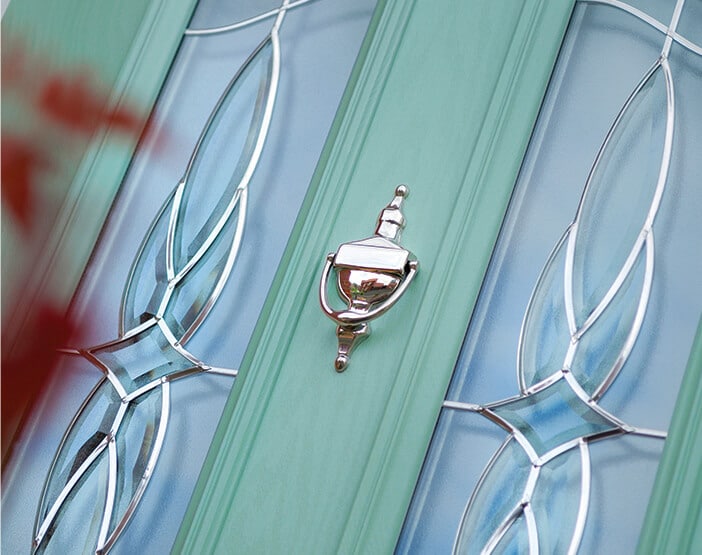Composite Front Doors Hucking
Professional Composite Front Installers
Transform The Entrance To Your Home With One Of Kentish Door’s Composite Front Doors
Kentish Doors are highly skilled Composite Front Doors installers based in Kent. We have an incredible range of entrance door colours, styles and features to enable you to create the perfect door for your home. Our doors are made to last, combining strong, state of the art energy efficient materials which reduce drafts, outside noise and also increase your thermal efficiency. All doors come with complex security systems, providing your home with added security which can lead to lower home insurance costs. Our doors are made and fitted to the highest standards. Using our free online composite door designer tool, you can design your door yourself. If you would like assistance creating the door, or have some questions we are happy to help you. To provide you with a quote we would require a site visit to ensure all measurements are correct before fabrication of the door begins. To arrange a free measure and quote please call us today on 01634 321202 or message us via our online contact form.


Choose your door from our gallery & design your perfect door online
Click below to design your perfect door online. Choose from hundreds of options to design your door in minutes.

Suited Hardware & Furniture
We offer a stunning range of suited furniture to match any home, from traditional hardware to contemporary stainless steel options.

13 Stunning Door Colours
Availble internal and external, we have colours to suit any home, be it traditional, contemporary or modern. We have something for everyone.

Locking and security
You can have any locking system with any furniture suite – so it’s even easier to get the lock and security you need with the furniture you want.

Glass and Glazing options
Our unique and patented glazing cassette can be removed from the inside to let you simply change the glass and reuse the cassette.
Hucking is a small hamlet and civil parish in the Maidstone District of Kent, England. It is located 4 miles (6.4 km) north-east of Maidstone and 5 miles (8.0 km) south-west of Sittingbourne. The parish is governed by a parish meeting.
The settlement sits atop the North Downs in a designated Area of Outstanding Natural Beauty (AONB) near the villages of Hollingbourne, Detling, Bicknor (where the population is included for census purposes) and Wormshill and between the main A249 and B2163 roads connecting the towns of Sittingbourne and Maidstone. The parish church is dedicated to St Margaret.
Hucking was historically part of the Hundred of Eyhorne. It has always been sparsely populated and isolated, with the parish forming part of the manor of Hollingbourne. The name may derive from Houkynnge, although in the middle ages it was also known as Rumpsted after the family which owned the land.
The church of St Margaret is early Norman in origin and dates to around 1100 AD. It has a small, square wooden belfry in place of a tower and retains some medieval stonework. It was restored in around 1878 and many of its features date from the 19th century. The church was designated as a Grade II listed building in 1968. Two carved headstones in the graveyard are also listed at the same grade.
The local pub, the Hook & Hatchet, was a traditional Kentish pub and, according to website of brewers and operators Shepherd Neame, had been run as such for around 100 years after a local family applied for a “beer and cider” only licence in the late 19th century. The pub was put up for sale by the brewery in early 2015 and closed. An attempt to buy the pub, designated as an asset of community value, was made. A possibly earlier building of the same name was in use as a pub from at least the first half of the 19th Century. The building is listed in the 1841 Census, with Elizabeth Sherwood as publican. The pub re-opened in June 2016.
A Parcelforce van allegedly used in the Securitas depot robbery was recovered from the car park of the Hook & Hatchet on 23 February 2006. Metal cages and packaging material, that may have been used to transport the money, were recovered in a field in nearby Detling on 24 February 2006
The North Downs Way, a long-distance footpath that passes along the ridge of the North Downs, runs close to the village and parallel to the better-known Pilgrims’ Way route. An area of around 235 hectares (580 acres) of ancient woodland is owned and managed by the Woodland Trust. This land was purchased by the trust in 1997 in order to preserve woodland, hedgerow and chalk grassland habitats and landscapes. A car park and a series of walks and bridleways are provided at the site.
A small radio transmitting station previously used by the military as part of the NATO ACE High relay communications system and more recently by mobile telephone companies is situated on farmland to the west of Hucking (51°17′45″N 0°36′51″E / 51.295947°N 0.614122°E / 51.295947; 0.614122) on account of its clear, unobstructed position high on the North Downs. The facility now lies un-manned. However, despite the existence of mobile telephone technology at the transmitting station site, cellular network signal quality in the village remains poor.
Racehorse trainer John Best trains his horses from Scragged Oak Farm in Hucking. His Hucking Horses syndicate is named for the village.
